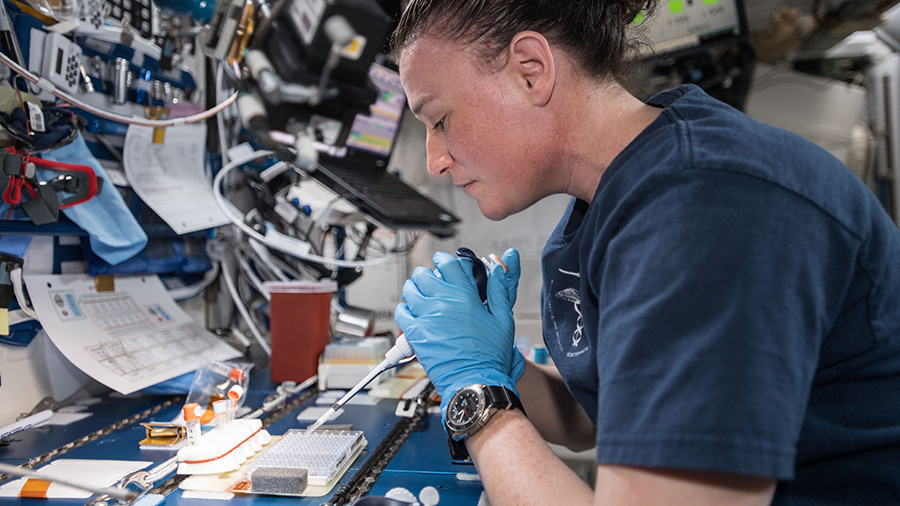Scientists and engineers are ready to fly a new instrument designed to measure the water contained within a snowpack.
Scientists and engineers are ready to fly a new instrument designed to measure the water contained within a snowpack.
Researchers analyzed more than 40,000 fires between 1950 to 2017 to learn how wildfire frequency, size, and location has changed. Here's what they learned.

A Russian spacewalk is planned before three Expedition 57 crew members return to Earth aboard a Soyuz spacecraft just before Christmas. Meanwhile, in the middle of the spacewalk and departure preparations, the International Space Station residents today also explored how living in space impacts the human muscle system. Flight Engineer Sergey Prokopyev will work outside …
JEM Airlock (JEMAL) Depressurization: The JEM Airlock was depressurized in preparation for the transfer of the NanoRacks External Platform Inserts (NREP) back to the Exposed Facility Unit (EFU) 4 location. The NREP was brought inside ISS earlier this week so the crew could exchange the sortie 3 payload for the sortie 4 payload. Each NREP …
Like the isbjørn (polar bears), we are ambush hunters. Our prey are atmospheric fountains, jets of gas being shot into space under the impact of the cusp aurora.

December is shaping up to be a heavy traffic period at the International Space Station. Two crews will swap places before Christmas and a U.S. spaceship will deliver new supplies and science. A Russian spacewalk is also planned for a crew vehicle inspection. The Expedition 57 crew onboard the station today continued preparing for the …
Cemsica Sample Exchange: Today the crew removed the calibration cartridge from the SUBSA facility and inserted the first Cemsica science cartridge for processing. Cemsica tests a novel approach of using particles of calcium-silicate (C-S) to synthesize nanoporous membranes (those with pores 100 nanometers or smaller) that can separate carbon dioxide molecules from air or other …
On Monday, Nov. 19, Northrop Grumman flew the L-1011 Stargazer and Pegasus XL rocket carrying NASA's Ionospheric Connection Explorer, or ICON, spacecraft back to Vandenberg Air Force Base in California. On Nov. 20, Northrop Grumman completed the de-mate of Pegasus from the L-1011 and transported the rocket safely into the integration facility. The Northrop Grumman/NASA …

In a replay similar to the weekend before Thanksgiving, two rockets on the opposite sides of the world are poised to launch one day after another to replenish the International Space Station with a new crew and cargo. Three new Expedition 58 crew members are preparing to blast off to the space station on a …
CASIS PCG-16 card fill: The crew continued the PCG Card Micro-G card fill that was not fully completed the previous day. This was performed using some of today’s microscope observation time due to the relatively short lifetime of the protein precipitant solution. Crystallization of LRRK2 Under Microgravity Conditions-2 (CASIS PCG 16) evaluates growth of Leucine-rich …